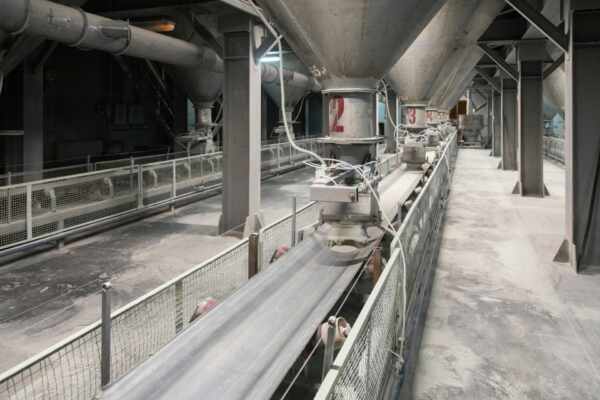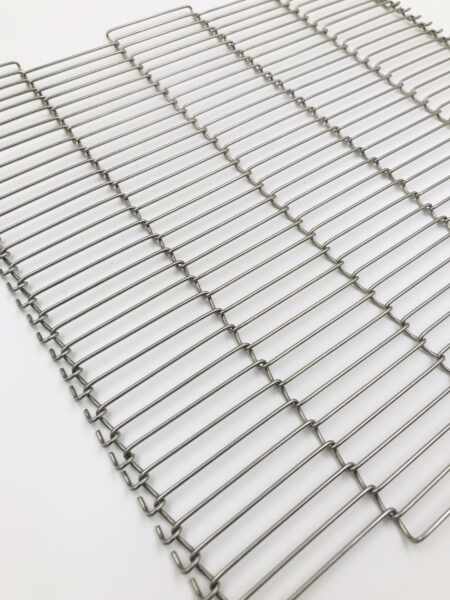Conveyor belts are essential components in manufacturing facilities and production lines across various industries, playing a pivotal role in transporting materials and products through each stage of the production process. As the backbone of your operation, it’s crucial to ensure that your conveyor belts are operating efficiently and effectively, helping to maximise productivity, minimise downtime, and reduce maintenance costs. In order to achieve and maintain optimal conveyor belt efficiency, it’s imperative to consider such factors as the selection of the right conveyor belt for your specific application, implementing preventative maintenance plans, and adopting best practices in conveyor system management.
As experienced conveyor belt specialists, our mission is to help you make informed decisions that contribute to the success of your operations. From the initial selection and installation of your conveyor belts all the way through to ongoing maintenance and support, our team is committed to providing industry-leading expertise and targeted solutions that ensure the continued efficiency and reliability of your conveyor system. Join us as we explore the many facets of optimising conveyor belt efficiency and learn how our comprehensive range of conveyor belt solutions can help you achieve exceptional results within your facility.
1. Selecting the Right Conveyor Belt Type
One of the first steps in optimising conveyor belt efficiency is selecting the most appropriate conveyor belt type for your specific application. With various options available, such as steel, plastic modular, fabric, and wire mesh belts, it’s crucial to choose a conveyor belt that meets your industry requirements and the unique challenges presented by your production process. The right conveyor belt type can directly impact efficiency, durability, and performance, helping to minimise maintenance and downtime while maximising productivity.
When choosing a conveyor belt type, consider factors such as the following:
- Material characteristics: The type of products or materials your conveyor belt will transport should dictate your choice of conveyor belt, as some materials may require specialised handling capabilities or greater resistance to wear and tear.
- Industry requirements: Industries such as food processing or pharmaceutical manufacturing may have specific compliance and sanitation standards that must be met, influencing the choice of conveyor belt material.
- Product handling needs: Evaluate your production process and any specific handling needs, such as inclined or declined transport, to ensure you select a conveyor belt capable of meeting these requirements.
2. Implementing Preventative Maintenance Plans
Preventative maintenance plays a vital role in maintaining conveyor belt efficiency by ensuring that potential issues are identified and addressed before they cause significant downtime or impact productivity. A well-executed preventative maintenance plan tailored to your conveyor system and operational needs can help minimise the likelihood of unexpected breakdowns and extend the lifespan of your conveyor belts.
Key components of a preventative maintenance plan may include:
Regular inspections: Conduct thorough visual inspections of your conveyor belts and components, looking for signs of wear and tear, misalignment, or damage that may require attention.
- Lubrication and tensioning: Regularly lubricate and tension your conveyor belts as per the manufacturer’s recommendations, as these simple steps can prevent premature wear and ensure optimal performance.
- Component replacement: Monitor the condition of your conveyor system’s critical components and replace them as needed to prevent downtime and maintain efficiency.
3. Addressing Common Conveyor Belt Inefficiencies
Various factors can contribute to conveyor belt inefficiencies, impacting the overall performance of your conveyor system. By proactively identifying and addressing these common issues, you can help maintain optimal efficiency and productivity.
Common conveyor belt inefficiencies to look out for include the following:
- Belt misalignment: Misaligned conveyor belts can cause excessive wear, premature belt failure, and reduced efficiency. Regularly inspect your conveyor system for signs of misalignment and make adjustments as necessary.
- Accumulation of material buildup: Material buildup on conveyor belts and components can cause inefficiencies, reduced belt life, and potential damage. Routinely clean your conveyor system and address any underlying causes of material buildup.
- Inadequate belt support: Poor belt support can lead to sagging, uneven wear, and reduced efficiency. Ensure that your conveyor system is adequately supported, and adjust or add support structures as needed.
4. Continuously Optimising Your Conveyor System
Optimising conveyor belt efficiency is an ongoing process, requiring vigilance and adaptability as your operational needs evolve. Continuously look for opportunities to improve your conveyor system’s performance, either through equipment upgrades or process improvements. Stay informed about industry trends and advancements in conveyor belt technology to ensure your conveyor system remains efficient and competitive.
5. Prioritising Worker Safety and Ergonomics
Amidst the drive for efficiency and productivity, it’s crucial not to overlook the importance of prioritising worker safety and ergonomics within conveyor systems. Ensuring a safe working environment not only safeguards employees but also contributes to overall operational efficiency by reducing the risk of accidents, injuries, and associated downtime.
Implementing safety measures such as guarding, emergency stop systems, and proper training protocols is essential to mitigate hazards associated with conveyor operations. Regular safety inspections and audits help identify potential risks and ensure compliance with industry regulations and standards.
Optimising ergonomics can enhance worker comfort and productivity. Designing workstations and access points with ergonomic principles in mind reduces strain and fatigue, enabling operators to perform tasks more efficiently and with reduced risk of musculoskeletal injuries.
Investing in employee training and awareness programs fosters a culture of safety, empowering workers to recognise and address potential hazards proactively. Encouraging open communication channels and soliciting feedback from frontline workers fosters a collaborative approach to safety improvement.
By placing a strong emphasis on worker safety and ergonomics, manufacturers not only protect their most valuable asset—their workforce—but also foster a culture of continuous improvement and operational excellence. Prioritising safety and ergonomics within conveyor systems is not just a regulatory requirement but a strategic imperative that drives long-term success and sustainability.
Conclusion
Optimising conveyor belt efficiency is an essential element of successful manufacturing operations. By selecting the right conveyor belt type, implementing preventative maintenance plans, addressing common inefficiencies, and embracing continuous improvement, you can enhance productivity, reduce downtime, and ensure the long-term success of your conveyor system.
Change Parts Pty Ltd is dedicated to helping you achieve optimal efficiency within your operations. If you’re looking to improve your conveyor belt system efficiency, don’t hesitate to reach out to us for invaluable advice, support, and customised solutions tailored to your specific needs.




